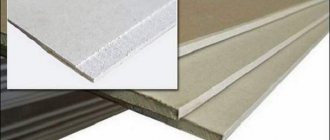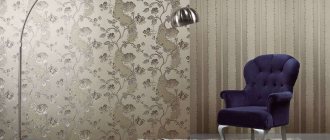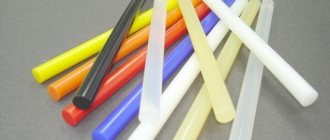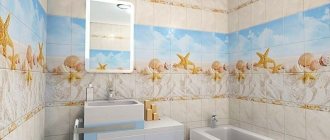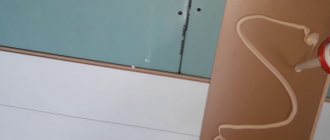In oil painting, white is used more and more often than other paints. You may have been surprised when choosing white, because they come in zinc and titanium.
“So what, what difference does it make, the main thing is that the white paint is white,” you might say. But as always there are nuances that artists know about. After reading this article, I hope you will not have questions about which white is better, zinc or titanium . Even if this is your first time choosing white in an art store, you should know the answer to the consultant’s question: “ zinc or titanium white .” Your choice of white paint will give you the pleasure of painting, but it can also reward you with disappointment.
Let's figure out which white is better, zinc or titanium:
Why do you need whitewash in painting?
As you know, in oil painting, white is used more often than other paints, and books can be written about the opposition and debate about which white is better, zinc or titanium. But how did this happen? Why is whitewash a truly irreplaceable paint and which one should you choose?
What is whitewash? In short, whitewash is a white oil paint that always runs out. The binder in them is oils, and the base is zinc or titanium dioxide.
Before the invention of these two types, artists used lead white, which, in principle, had good properties, but was poisonous in composition.
Whitewash is a paint that always runs out
Centuries later, chemists developed non-toxic and inexpensive zinc white and then titanium white, which displaced lead paint from the art market.
What is whitewash used for? First of all, white is used when mixing paints to obtain different shades of certain colors. Secondly, they are needed when applying paint in layers and using the glaze technique. In addition, each type of white can give a certain effect and expressiveness to the entire picture, depending on the type and amount of paint on the canvas.
Therefore, do not rush to choose one type of white without knowing which ones are needed for what.
Interesting Facts
Due to the fact that the widespread production of titanium white began only in the 20th century, the authenticity of paintings created earlier was checked by the presence of titanium in the paint.
If you add ilmenite dye to the composition, you can get a more durable coating. This characteristic is used in space production to paint the surface of ships.
If you add ilmenite dye to the composition, you can get a more durable coating.
The choice of zinc or titanium white is made taking into account the specific operating conditions and material. Both materials have their positive and negative sides, knowing their features, it will not be difficult to decide on the option.
Titanium white for painting
Artistic titanium white began to be produced just over a hundred years ago. For the world of painting, this is a very short period of time, and yet, chemists managed to create white that is harmless and not hazardous to health.
Titanium white is much better in its covering properties than other types of white. This means that if you need to cover up some dark areas in the painting, titanium white will do an excellent job of this.
Titanium white also dries faster than zinc white.
But such white also has disadvantages - it will be very difficult to make glazes with titanium, and also, the oil paints themselves can turn yellow over time from the use and addition of titanium white to them.
They also lighten any color very well and have a warm undertone. This is important to consider when painting in cold colors.
Characteristics of titanium gouache
The main component of artistic paint is titanium oxide. The compound practically does not occur in nature, so the substance is produced on a production scale using sulfuric acid as a source. When making titanium-based gouache, finely rubbed pigments with binding components in combination with gum arabic are used.
In terms of environmental properties, titanium white is safe and harmless; it can be used to create drawings for young artists.
Main features of titanium white:
- an even coating on a surface of heterogeneous texture, texture and porosity, well distributed over the canvas (product);
- the material is distinguished by its universal use in artistic works using wood, paper, cardboard;
- long-term preservation of color saturation and long service life of artwork;
- immunity to the external environment, creating a durable matte finish;
- visual effect of a warm shade, good compatibility with other colors.
The scope of application of titanium white is very wide: it can be used for graphic, decorative and painting works; gouache easily and evenly lays on canvas, cardboard and paper. Whitewash based on titanium dioxide is harmless, so gouache is used in children's art for artistic drawing.
Interestingly, when white is combined with certain components, for example, ilmenite pigment, the strength of the coating increases many times. This feature of the material is used in the space industry - titanium white with ilmenite pigment is applied to the hull parts of ships.
Such whitewash cannot be used for all works. Under the influence of sunlight, areas of artistic canvases treated with gouache are highlighted, causing a chalking effect. When mixed with organic pigments, gouache may acquire a bluish tint.
Important! It is not recommended to combine paint with cadmium, ultramarine, azure and cobalt - this combination causes a soapy effect.
On video: how to make oil white paint yourself.
Zinc white and its main differences from titanium
So what is the difference between these whites?
Zinc, unlike titanium, has a cold, even bluish tint. And this also needs to be taken into account when painting pictures in different color tones.
Zinc white for painting is well resistant to light, but is subject to cracking and paint delamination more often than titanium. This in no way means that you need to buy only titanium whites, or that nothing will happen with titanium whites. It’s just that the composition of zinc white is most susceptible to changes under external environmental influences.
Also, such white will take longer to dry and delay the drying of other layers of color. But acrylic paint will still dry faster than oil paint, therefore, so will whitewash, regardless of the type.
In general, this type of white is more often used with other paints, when mixing and diluting, and with titanium they prefer to cover layers or do a full background fill. Here's what else makes these whites different.
Characteristics of white paints
Zinc white goes on sale in the form of ready-made or thickly rubbed paints. Thickly ground materials must be diluted with oil varnish before use. Other thinners are not suitable for this purpose, since as a result the painted surface will acquire a yellowish tint.
This material in its pure form is characterized by a snow-white color with a bluish tint. The quality and whiteness of this material depends entirely on the raw materials from which the pigment was obtained. This product should be stored covered, as it absorbs moisture from the environment. Zinc white pigments do not ignite and do not deteriorate under the influence of microorganisms.
This coloring material has a lot of positive qualities:
- Good resistance to direct sunlight.
- High level of compatibility with many colors in the colorful palette.
- Possibility of application in all areas of painting and decorative arts.
- Low toxicity.
Zinc white has negative qualities:
- takes a long time to dry;
- have low hiding power;
- the paint layer created by whitewash is prone to cracking;
- require large consumption of oil solvents.
Thickly ground white is used to obtain colorful compositions for coating wooden, metal and plastered surfaces of walls and ceilings.
Lead white had a pure snow-white color that did not lose its brightness when exposed to sunlight. The positive qualities of these paints include:
- plasticity, which allowed the paint to remain strong and not crumble, even if it became necessary to roll up the canvas;
- good resistance to moisture;
- the ability to quickly dry the paint layer after application to the surface.
Lead white has disadvantages that have caused it to become less popular:
- high toxicity;
- not mixed with all paints;
- Over time, the paint layer loses its brightness.
All these negative aspects have led to the fact that lead white is not used for industrial purposes.
Titanium white is advantageous because it:
- create a matte and very durable surface;
- able to withstand exposure to atmospheric moisture and direct rays of light;
- have the highest brightness of all modern white paints.
Titanium compounds have one drawback: when dry, they create a brittle surface of the paint layer.
Alkyd paints were the latest to appear; they are the product of a complex chemical synthesis.
Application
Due to its high toxicity, lead white is not used in everyday life. To paint surfaces in order to isolate them from moisture, oil-based zinc white, alkyd and titanium compounds are used.
For painting plastered walls and ceilings, water-soluble paints based on zinc white are used. It should be noted that walls are now rarely painted white; most often this paint is used to cover the ceiling.
Checklist: how to choose white
Choose white depending on what effect you want to achieve.
Your choice will depend on what effect you want to achieve with white, and what you ultimately want to get in your work - if a more matte texture, then choose titanium white, and if you dream about a painting with a light, translucent effect, then zinc.
In any case, I advise you to purchase both zinc and titanium whites in order to see the difference in practice and understand which ones you still need more, and which ones you can buy less of.
Whitewash is one of the best on the Russian market
If you have a small tube of white, it’s better to immediately buy another one with a larger volume
Rules for working with zinc white
To carry out painting work at the proper level, you need to know the main features of working with zinc-based white. The powder is prepared according to the manufacturer’s instructions; the bleaching procedure is as follows:
- The master must wear protective clothing, gloves, goggles;
- Work in a room with good ventilation;
- The surface is cleaned of all types of dirt and old finishes;
- If there are defects, the ceiling is plastered again to obtain an even coating;
- The putty layer is treated with sandpaper.
The base, which has a high level of absorption of solutions, must first be coated with drying oil.
To carry out painting work at the proper level, you need to know the main features of working with zinc-based white.
Advice from professionals
- Coloring materials must be stirred before use. If they have thickened, you can add natural drying oil or oil varnish to the zinc white. Oil paints are diluted with white spirit, turpentine or a special solvent for oil paints (all this can be purchased at specialized stores that sell goods for artists).
- Paints are applied to a primed surface.
- High-quality painting can be achieved by applying two layers of paint.
- A new layer of paint is applied only to a well-dried surface, otherwise the film formed by the previous layers will be damaged.
- If lead white is used in artistic activities, it is necessary to take precautions and periodically ventilate the room.
White paints are used in everyday life more often than others.
This is due to the fact that they are mixed with other colors to create the necessary shades. It is important to remember that you should only combine materials that are created on the same basis.
Sequence of painting work
The ceiling is painted as follows:
- The first thing that needs to be done even before starting painting work is to put on protective goggles over your eyes, and gloves on your hands; you should also cover your hair with a scarf or cap (this is done in order to avoid paint dripping from the ceiling from getting into your eyes and on the hair).
- It is necessary to provide air access to the room. After painting, the room should be well ventilated.
- Clean the ceiling from layers of old cracked and falling off plaster, paint, dust, grease, and drips.
- Apply new layers of plaster and level the ceiling. Painting is carried out only on a perfectly flat surface.
- The putty surface is sanded with sandpaper until the ceiling reaches the desired smoothness.
- The surface, which has increased absorption properties, is covered with two layers of drying oil. The primer layers are allowed to dry between coats.
Sulfopon
Sulfopone is a calcium lithopone, i.e. a lithopone that contains CaS04 instead of BaS04. It can be obtained from a solution of calcium sulfhydrate by treating it with a solution of zinc sulfate according to the equation
Ca(SH)2 + ZnS04 = CaS04 + ZnS + H2S
The released hydrogen sulfide can be utilized to obtain a new amount of Ca(SH)2 solution from calcium sulfide. The hiding power and light resistance of sulfopone are even slightly higher than that of lithopone; in other properties it is close to lithopone. It is necessary to take into account the greater solubility of CaS04 compared to BaS04. When treated with acid, it releases, like lithopone, bubbles of H2S gas.
Lithopon
Lithopone is zinc sulfide, precipitated simultaneously with barium sulfate according to the equation:
BaS + ZnS04 = ZnS + BaS04.
Possessing valuable technical properties, this pigment at the same time contains less non-ferrous metal (Zn) than other varieties produced on the basis of non-ferrous metals. Lithopone contains about 20% zinc, while zinc, for example, contains 80%. Therefore, despite the fact that lithopone began to be prepared later than other varieties (with the exception of titanium), it has found extremely wide application.
In terms of world production and use, lithopone apparently occupies first place among pigments. The disadvantage is that it is not lightfast: when exposed to light, lithopone darkens. This phenomenon is explained differently. Some believe that this occurs as a result of the reaction occurring between zinc sulfide and zinc oxide, which is present in them in small quantities, according to the equation
ZnS + 2ZnO = 3Zn 4- S02
with the formation of metallic zinc; the latter causes darkening of the lithopone.
In the dark, zinc can oxidize in air to ZnO, and the darkened lithopone turns white again. Others accept that zinc sulphide in light can decompose into zinc sulphide and metallic zinc, which also leads to darkening of the lithopone. The question of the reasons for the non-light fastness of lithopone, the main drawback of this most important white pigment, is still far from being sufficiently clarified. This is evidenced, among other things, by conflicting opinions that exist, for example, regarding the influence of chlorine, as well as foreign metals (lead, cadmium, iron, manganese, thallium, arsenic, nickel and cobalt).
The presence of the latter, even in minimal quantities, according to Eibner, determines the non-lightfastness of lithopone. In contrast to this opinion, the assertion that small admixtures of these metals are not only not harmful, but even beneficial, has gained some recognition. In accordance with this, some patents even propose introducing these metals, especially cobalt, into the lithopone, of course in such quantities that would not spoil the color of the lithopone.
Three varieties of dry lithopone are prepared:
- white printing (at least 26% ZnS),
- red seal (at least 29% ZnS),
- green seal (at least 32% ZnS).
Thickly ground lithoponic white. Two varieties are produced that differ from each other in the composition of the dry paint and its content in the paste.
Transportation and storage
The product can be transported by all types of covered transport, with the exception of whitewash packaged in special soft containers - they can be transported in open vehicles and also stored in open areas.
As for zinc white, packaged in other packaging, they must be stored only in closed warehouses, with temperatures ranging from –40 ºС to +40 ºС. They are placed on wooden pallets in stacks up to 3 m high.
Shelf life – 1 year.
Unique properties of titanium pigments
The benefits of using titanium white are:
- creating a matte and durable surface after application;
- ability to withstand sudden changes in indoor humidity;
- neutral reaction to direct sunlight;
- creating a bright texture layer.
Titanium white has one drawback - the structure of the paint becomes brittle after drying, so such a canvas or design cannot be rolled up, and during transportation be extremely careful not to damage the object.


